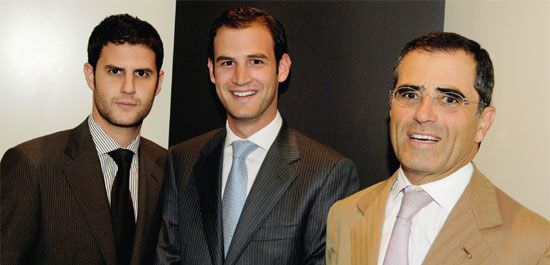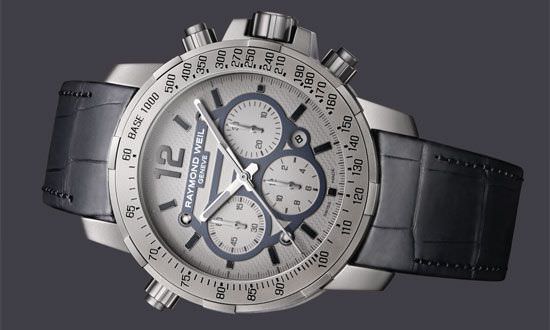
Raymond Weil has been present on the American market since 1978 and it is estimated that some 2.2 million Raymond Weil watches are being worn in the United States today. This is an indication of the importance of the accumulated experience that the family-owned brand has in this particular market, which is and should remain the Number One market for the Geneva watch brand.
New subsidiary
From the beginning of Raymond Weil’s presence there, the American market has been managed by Beny Shabtai. Last autumn, the brand decided, however, to take direct control of this territory. Olivier Bernheim, the brand’s CEO, has taken over as head of the new subsidiary located on Madison Avenue in New York City. His son Pierre is in charge of sales, while his other son Elie manages the brand’s marketing. Administrative duties for the USA as well as the Caribbean and Mexico (two very important markets for Raymond Weil) are handled by José Roman.
The move to take back control of the overall structure has involved a number of changes on a market that, as everyone agrees, has suffered greatly, sagging under the weight of accumulated stocks during the preceding economic downturn. “But the USA is and will remain an incredibly dynamic market,” explains Pierre Bernheim enthusiastically, adding that in just a few months he has personally visited, “more than 60 per cent of the 900 stores that we work with. We closed 70 stores that did not meet our criteria but we have plans to open 100 new ones.”

Elie Bernheim, Pierre Bernheim and Olivier Bernheim
For Olivier Bernheim, the advantages of the brand are many. “In the United States, the name Raymond Weil is very well known and is very well established. It is the symbol of affordable luxury, and is intrinsically linked to Swiss timekeeping. American retailers place the notion of independence at the head of their list of values—more than 50 per cent are independents themselves. They detest being pressured, are wary of large groups, and are generally staunchly loyal. Our personal and family involvement on this market thus involves a primordial factor of trust. They know that we are working for the long term and that we are building together in an open spirit of partnership. Like them, we are independent and, like they often are, we are also a family company. We therefore have a relationship of mutual trust between people with similar values. And that is irreplaceable.”
“Most of them,” quickly adds Pierre Bernheim, “act the same way with their own clientele. They are ‘the jeweller on the corner’ and maintain close relationships with their customers. The American client is very demanding. They detest arrogance. They want to be well received and recognized, and they feel that they have the right to competent and impeccable service. The American retailer is the same. It is generally someone who knows his clientele perfectly well, often personally; someone who is very structured, very analytical and manages the stores like real profit centres. American retailers know what they are buying, why, and for whom, and they abhor duplication. In a store in the U.S., the segmentation of brands is clearly established.”

NABUCCO “Va Pensiero”
An even greater potential
Raymond Weil’s flagship collection on the American market is without a doubt the Parsifal, whose average price reaches a surprising US$2,000. When asked about the brand’s current positioning, Olivier Bernheim replies that American retailers themselves estimate that the ideal offer for Raymond Weil watches in the years to come “should be around US$650 to US$1,500, with a high point of US$3,250 for certain special products. Despite the economic crisis that is still severely affecting this nation, the potential for growth is enormous. There is a lot to be done, especially in the mechanical watch domain since quartz continues to largely dominate the market and the watchmaking culture is still often in its embryonic stage.”
“But the fact that we stopped all deliveries during the transition between our former distribution structure and our new organization gives us a very interesting advantage,” continues Olivier Bernheim, “because we are now re-supplying our retailers with a global package, notably at the level of after-sales service, packaging, corners, and shop-in-shop concepts that they did not have before. We are offering them a complete brand environment, evoking luxury according to Raymond Weil, that will reach them at the same time as a series of new models. It is on these new models that we are concentrating the main efforts of our communication, essentially through billboards. We have thus been able to re-launch an important dynamic, relayed in a continuous manner by our presence in the field, a terrain criss-crossed with a dozen representatives, themselves supported by 50 people in New York, of which 20 are watchmakers solely dedicated to after-sales service.”
Source: Europa Star April - May 2010 Magazine Issue




